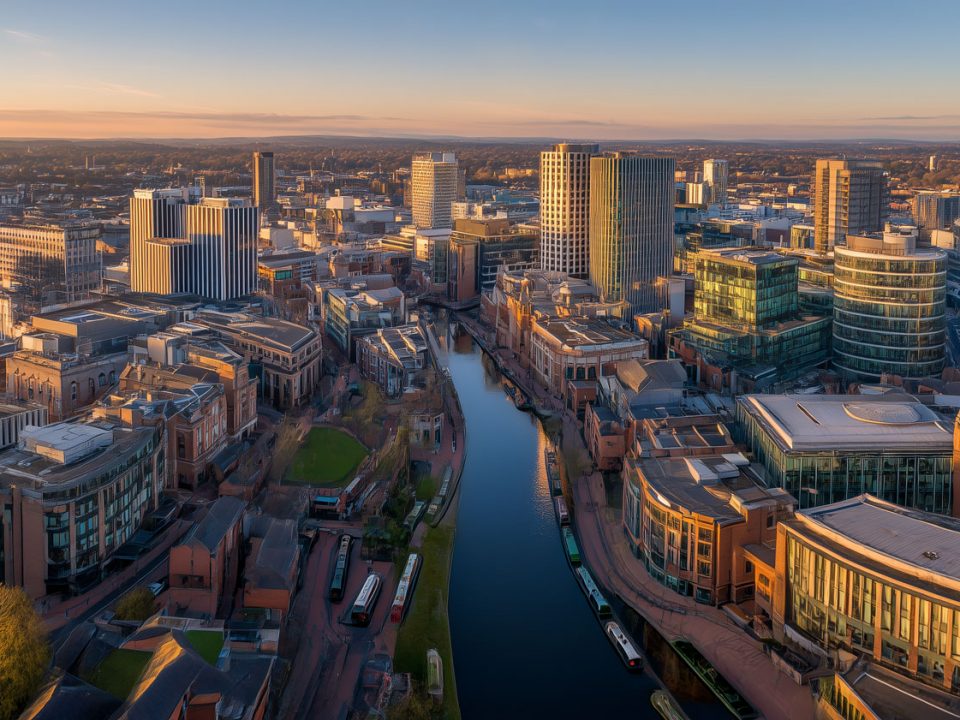
Arts organisations across the UK are increasingly recognising the power of documentary photography to capture authentic moments, tell compelling stories, and build meaningful connections with their audiences. Unlike traditional promotional photography, documentary photography offers a genuine glimpse into the heart of creative work, preserving the passion, process, and impact that defines the arts sector.
Research demonstrates that organisations implementing strategic documentary photography achieve significant improvements in audience engagement, with professional photography increasing website engagement by up to 94%compared to text-only content. Visual storytelling has become essential for arts organisations, with documentary photography serving as a powerful tool for grant applications, community engagement, and organisational legacy preservation.
However, successful documentary photography projects require careful planning, clear objectives, and strategic coordination between photographers and organisations. Whether documenting a single performance, capturing an entire festival, or creating an ongoing visual narrative of organisational growth, proper planning ensures that every project delivers maximum value and authentic storytelling impact.
This comprehensive guide provides arts organisations with the framework, tools, and insights needed to plan documentary photography projects that effectively communicate their mission, engage their communities, and support their broader organisational goals.
Table of Contents
ToggleUnderstanding Documentary Photography for Arts Organisations
Documentary photography differs significantly from traditional promotional or marketing photography. Rather than staging perfect moments, documentary photographers capture genuine interactions, behind-the-scenes processes, and authentic emotions that reveal the true character of arts organisations.
For arts organisations, documentary photography serves multiple purposes beyond simple documentation. These images become valuable assets for grant applications, annual reports, social media campaigns, and historical archives. They provide evidence of community engagement, demonstrate organisational impact, and create visual narratives that resonate with funders, audiences, and stakeholders.
The documentary approach particularly suits arts organisations because it honours the creative process itself. Rather than interrupting rehearsals or performances for posed shots, documentary photography preserves the natural flow of artistic work while creating compelling visual stories that authentically represent the organisation’s values and mission.
Arts organisations should consider documentary photography as an investment in their visual identity and storytelling capacity. Unlike stock photography or generic promotional images, documentary photography creates unique, ownable content that cannot be replicated by competitors and provides genuine insight into the organisation’s character and impact.
📚 Additional Resources: For comprehensive guidance on arts marketing and visual storytelling, explore Arts Council England’s digital marketing resources and Creative Scotland’s audience development toolkit, which provide essential frameworks for creative sector organisations seeking to enhance their visual communication strategies.
Defining Project Objectives and Scope
Successful documentary photography projects begin with clearly defined objectives that align with broader organisational goals. Arts organisations must first identify what they hope to achieve through visual documentation, whether that involves increasing audience engagement, supporting fundraising efforts, creating educational resources, or building historical archives.
Project scope directly impacts planning requirements, budget considerations, and photographer selection. Single-event documentation requires different preparation than ongoing organisational photography, whilst large-scale projects spanning multiple venues or extended timeframes demand more complex coordination and logistics planning.
Arts organisations should establish specific, measurable outcomes for their documentary photography projects. Rather than vague goals like “better photos,” effective objectives might include “capturing 50 images suitable for grant applications,” “documenting the complete creative process for three productions,” or “creating visual content for 12 months of social media campaigns.”
The scope definition process should also consider the intended lifespan and usage of the resulting images. Photography intended for immediate promotional use requires different planning than images destined for historical archives or long-term brand development. Clear scope definition ensures that all stakeholders understand project expectations and deliverables from the outset.
Establishing Timeline and Project Phases

Documentary photography projects benefit from structured timeline planning that accommodates both the photographer’s working methods and the organisation’s operational requirements. Effective timeline planning begins with identifying key moments, events, or processes that require documentation, then working backwards to establish preparation and coordination schedules.
Most documentary photography projects follow a three-phase structure: pre-production planning, active documentation, and post-production delivery. Pre-production typically requires 2-4 weeks for smaller projects and 6-12 weeks for complex, multi-location documentation. This phase includes briefing sessions, location visits, access arrangement, and stakeholder coordination.
The active documentation phase varies dramatically based on project scope. Single events might require only a few hours of photography, whilst comprehensive organisational documentation could span several months with intermittent shooting sessions. Arts organisations should plan for multiple documentation sessions rather than attempting to capture everything in a single intensive period.
Post-production timelines depend on the volume of images captured and the level of editing required. Professional photographers typically need 1-2 weeks for basic editing and selection of event photography, whilst extensive documentary projects might require 4-6 weeks for comprehensive post-production work. Organisations should factor these timelines into their content calendar and promotional planning.
Sample Project Timeline Framework
Large-Scale Organisational Documentation (3-Month Project)
- Week 1-2: Initial consultation and objective setting
- Week 3-4: Location reconnaissance and access planning
- Week 5-6: Staff briefing and coordination setup
- Week 7-14: Primary documentation phase (multiple sessions)
- Week 15-16: Additional coverage and gap filling
- Week 17-20: Post-production and image selection
- Week 21: Final delivery and archive setup
Festival or Event Documentation (4-Week Project)
- Week 1: Event briefing and logistics planning
- Week 2: Venue visits and technical preparation
- Week 3: Pre-event activities and setup documentation
- Week 4: Event coverage and immediate post-production
- Week 5-6: Final editing and delivery
Performance Documentation (2-Week Project)
- Week 1: Rehearsal observation and planning
- Week 2: Technical rehearsal and performance coverage
- Week 3: Post-production and delivery
Budget Planning and Investment Framework
Documentary photography investment varies significantly based on project scope, photographer experience, and technical requirements. Understanding cost structures enables arts organisations to make informed decisions about photography investment whilst ensuring optimal value for their creative budgets.
Photography Investment Comparison
Photography Approach | UK Cost Range | Typical Output | Best Suited For |
Emerging Photographer | £200-£500/day | 20-50 edited images | Small events, limited budgets |
Experienced Professional | £500-£1,200/day | 30-80 edited images | Major events, ongoing projects |
Specialist Arts Photographer | £800-£2,000/day | 40-100 edited images | High-profile projects, prestigious venues |
Comprehensive Documentation | £1,500-£5,000 project | 100-300 edited images | Annual reports, major campaigns |
Cost-Effective Planning Strategies
Arts organisations can maximise photography investment through strategic planning approaches that deliver professional results within budget constraints:
- Multi-event booking: Secure reduced daily rates for multiple event coverage
- Seasonal planning: Book photographers during quieter periods for better rates
- Collaborative projects: Partner with other organisations to share photography costs
- Student photographer programmes: Work with photography colleges for emerging talent
- Equipment sharing: Reduce costs by providing basic lighting or audio equipment
- Flexible scheduling: Allow photographers scheduling flexibility for reduced rates
For additional guidance on arts organisation budgeting, consult Arts Council England’s financial management resourceswhich provide comprehensive frameworks for creative sector financial planning.
Selecting the Right Documentary Photographer
Photographer selection significantly impacts project success, making portfolio review and experience assessment crucial planning considerations. Arts organisations should prioritise photographers with demonstrated experience in cultural sector documentation rather than general commercial photographers, as documentary work requires specific skills and sensitivity to creative environments.
Essential Photographer Qualifications Checklist
When evaluating potential documentary photographers, arts organisations should assess candidates against comprehensive criteria that ensure successful project outcomes:
Technical Expertise Requirements:
- [ ] Proficiency in low-light photography for performance venues
- [ ] Silent camera operation capabilities for live performances
- [ ] Professional-grade equipment suitable for diverse venue conditions
- [ ] Post-production skills including colour correction and archival preparation
- [ ] Understanding of file formats and delivery requirements for different applications
Cultural Sector Experience:
- [ ] Portfolio demonstrating arts organisation work
- [ ] Understanding of creative processes and rehearsal environments
- [ ] Experience working with performers, directors, and production teams
- [ ] Knowledge of venue access requirements and safety protocols
- [ ] Familiarity with arts funding and grant application image requirements
Professional Working Methods:
- [ ] Ability to work unobtrusively during artistic activities
- [ ] Flexible approach to changing schedules and creative demands
- [ ] Clear communication protocols and project management skills
- [ ] Comprehensive insurance coverage for equipment and liability
- [ ] Transparent pricing structure and contract terms
Professional documentary photographers understand the importance of working unobtrusively within artistic spaces. They possess the technical skills necessary to capture high-quality images in challenging lighting conditions typical of performance venues, rehearsal spaces, and outdoor events. Additionally, experienced cultural sector photographers appreciate the collaborative nature of arts work and can integrate seamlessly into existing creative processes.
For photographer directory resources, consult the Association of Photographers (AOP) and British Institute of Professional Photography (BIPP), which maintain comprehensive databases of qualified professionals with arts sector experience.
Portfolio assessment should focus on the photographer’s ability to capture authentic moments and emotions rather than simply technical proficiency. Arts organisations should look for evidence of storytelling capability, sensitivity to different cultural contexts, and experience working within similar organisational structures and environments.
The selection process should include detailed discussions about working methods, equipment requirements, and collaboration expectations. Professional documentary photographers typically provide clear information about their approach to different situations, their policies regarding image usage and licensing, and their experience working with arts organisations on similar projects.
Pre-Production Planning and Coordination
Thorough pre-production planning establishes the foundation for successful documentary photography projects. This phase involves detailed coordination between the arts organisation and photographer to ensure smooth execution and optimal results. Pre-production planning addresses logistical requirements, access arrangements, and stakeholder communication protocols.
Location assessment forms a critical component of pre-production planning. Photographers need to understand the physical spaces where documentation will occur, including lighting conditions, access restrictions, noise considerations, and potential safety requirements. Arts venues often present unique challenges that require advance planning and technical preparation.
Staff briefing ensures that all team members understand the documentation process and their role in supporting the photographer’s work. Effective briefings address questions about the photographer’s presence, explain the documentary approach, and establish protocols for coordinating with ongoing artistic activities. Well-briefed staff members become valuable collaborators in the documentation process.
Access coordination involves identifying key personnel, establishing communication channels, and creating contingency plans for schedule changes or unexpected situations. Arts organisations operate in dynamic environments where schedules frequently shift, making flexible coordination essential for successful documentation projects.
Documentation Planning Checklist
Initial Planning Phase
- [ ] Define project objectives and success metrics
- [ ] Establish budget parameters and approval processes
- [ ] Identify key stakeholders and decision makers
- [ ] Create preliminary timeline and milestone schedule
- [ ] Research and shortlist potential photographers
Pre-Production Phase
- [ ] Conduct detailed briefing with selected photographer
- [ ] Complete venue visits and technical assessments
- [ ] Arrange necessary access permissions and passes
- [ ] Coordinate with security and venue management
- [ ] Brief all relevant staff members and volunteers
- [ ] Establish communication protocols and contact lists
- [ ] Plan contingency arrangements for schedule changes
Documentation Phase
- [ ] Confirm all logistics 48 hours before each session
- [ ] Provide photographer with updated schedules and contacts
- [ ] Ensure venue access and technical requirements are met
- [ ] Monitor progress and address any emerging issues
- [ ] Maintain communication with all stakeholders
Post-Production Phase
- [ ] Review initial image selections with photographer
- [ ] Provide feedback on edit direction and priorities
- [ ] Approve final image selection and processing
- [ ] Arrange delivery in required formats and resolutions
- [ ] Establish archive system for long-term storage
- [ ] Plan deployment of images across relevant channels
Technical Considerations and Equipment Requirements
Documentary photography in arts environments presents unique technical challenges that require professional expertise and appropriate equipment. Understanding these technical requirements helps arts organisations make informed decisions about photographer selection and project planning, ensuring that technical limitations don’t compromise the quality or scope of documentation.
Venue-Specific Technical Requirements
Venue Type | Primary Challenges | Equipment Solutions | Special Considerations |
Traditional Theatre | Low stage lighting, audience proximity | Fast lenses (f/1.4-f/2.8), high ISO capability | Silent shutter modes, minimal movement |
Gallery Spaces | Mixed lighting, reflective surfaces | Colour-balanced lighting, polarising filters | Permission for flash usage, artwork protection |
Outdoor Festivals | Weather conditions, crowd management | Weather-sealed equipment, telephoto lenses | Safety protocols, crowd accessibility |
Rehearsal Studios | Artificial lighting, space constraints | Portable lighting, wide-angle lenses | Minimal disruption, flexible positioning |
Performance Venues | Complex lighting systems, audio sensitivity | Professional flash systems, wireless triggers | Sound isolation, lighting coordination |
Essential Equipment Specifications
Professional documentary photography equipment must meet demanding technical standards whilst remaining practical for arts environment usage:
Camera Body Requirements:
- Full-frame sensor for superior low-light performance
- Silent or quiet shutter modes for performance documentation
- Dual memory card slots for backup security
- Weather sealing for outdoor event coverage
- High ISO capability (usable up to ISO 6400+)
Lens Selection Priorities:
- Fast aperture lenses (f/1.4-f/2.8) for low-light conditions
- 24-70mm f/2.8 for versatile documentary coverage
- 70-200mm f/2.8 for distance shooting and intimate moments
- 35mm or 50mm f/1.4 for environmental portraits and detail work
Supporting Equipment:
- Professional tripods with silent operation capabilities
- External flash systems with bounce and diffusion options
- Backup battery systems for extended shooting sessions
- High-capacity, fast memory cards for continuous shooting
- Portable reflectors and diffusers for lighting control
Lighting conditions in arts venues frequently challenge conventional photography approaches. Performance spaces, rehearsal rooms, and galleries often feature complex lighting systems designed for artistic effect rather than photography. Professional documentary photographers possess the equipment and expertise necessary to capture high-quality images without interfering with existing lighting setups or artistic activities.
For technical guidance and equipment recommendations, The Royal Photographic Society provides comprehensive resources for professional photography standards and best practices in cultural documentation.
Audio considerations become particularly important when documenting live performances, recording sessions, or sound-sensitive rehearsals. Professional cameras and equipment should operate silently to avoid disrupting artistic work. Experienced cultural sector photographers understand these requirements and plan their equipment selection accordingly.
Mobility and discretion requirements influence both equipment selection and working methods. Documentary photographers working in arts environments need portable, professional equipment that allows them to move quickly and unobtrusively through different spaces whilst maintaining image quality standards. Heavy or complex equipment setups can interfere with the natural flow of artistic activities.
Managing Access and Permissions
Access management represents one of the most complex aspects of documentary photography planning in arts organisations. Different stakeholders often have varying levels of comfort with photography, whilst legal and contractual obligations may restrict documentation in certain contexts. Effective access management requires clear policies, comprehensive communication, and flexible problem-solving approaches.
Permission Management Framework
Permission Type | Key Stakeholders | Documentation Required | Timeline Needed |
Venue Access | Venue management, security, technical staff | Signed access agreements, insurance certificates | 2-4 weeks advance |
Performer Consent | Artists, agents, union representatives | Model release forms, usage agreements | 1-2 weeks advance |
Audience Photography | Marketing teams, venue policies, legal counsel | Audience notification, signage, opt-out protocols | 3-4 weeks advance |
Intellectual Property | Rights holders, composers, choreographers | IP clearance, usage restrictions | 4-8 weeks advance |
Child Protection | Safeguarding officers, parents, guardians | Enhanced DBS checks, parental consent | 6-8 weeks advance |
Legal and Ethical Considerations Checklist
Arts organisations must navigate complex legal and ethical requirements when planning documentary photography projects:
Performance Rights and IP Protection:
- [ ] Secure permissions for photographing copyrighted performances
- [ ] Understand usage restrictions for different types of artistic work
- [ ] Obtain clearances for music, choreography, and dramatic works
- [ ] Document any limitations on image distribution or commercial usage
- [ ] Establish protocols for performer and creator attribution
Individual Privacy and Consent:
- [ ] Implement comprehensive consent procedures for all photographed individuals
- [ ] Create clear opt-out mechanisms for audience members and participants
- [ ] Establish special protocols for photographing minors or vulnerable individuals
- [ ] Develop data protection procedures compliant with GDPR requirements
- [ ] Create clear usage guidelines for social media and promotional applications
Venue and Safety Compliance:
- [ ] Obtain necessary insurance coverage for photography activities
- [ ] Complete venue-specific safety briefings and access training
- [ ] Understand emergency procedures and evacuation protocols
- [ ] Establish equipment security and storage arrangements
- [ ] Coordinate with venue technical teams regarding power and positioning
Performance documentation frequently involves multiple permission layers, including venue agreements, performer contracts, audience consent considerations, and potential rights management issues. Arts organisations must coordinate these various requirements whilst ensuring that documentation activities don’t interfere with artistic integrity or audience experience.
For legal guidance specific to arts organisations, consult Intellectual Property Office guidance on copyright in the creative industries and Arts Council England’s safeguarding resources.
Behind-the-scenes access requires careful coordination with creative teams who may be working under pressure or dealing with sensitive artistic processes. Documentary photographers must earn the trust of performers, directors, and production teams by demonstrating professionalism, discretion, and respect for creative boundaries.
Privacy considerations extend beyond formal legal requirements to include ethical obligations regarding individual consent and organisational reputation. Arts organisations should establish clear policies about documentation in different contexts and ensure that all stakeholders understand their rights and responsibilities regarding image usage and distribution.
Coordinating with Ongoing Operations
Arts organisations operate in dynamic environments where schedules, priorities, and logistics frequently change without advance notice. Successful documentary photography projects require coordination systems that accommodate this operational reality whilst ensuring that documentation objectives are met effectively and efficiently.
Rehearsal documentation requires particular sensitivity to creative processes and artistic development. Directors, performers, and creative teams need space to explore, experiment, and make mistakes without feeling observed or judged. Skilled documentary photographers understand how to capture these processes whilst maintaining the creative atmosphere essential for artistic development.
Event documentation involves coordination with multiple operational teams, including technical crews, front-of-house staff, marketing teams, and volunteer coordinators. Each team has specific responsibilities and concerns that may impact documentation activities. Effective coordination ensures that photography enhances rather than complicates existing operational procedures.
Administrative coordination includes managing contracts, permissions, payment schedules, and delivery requirements within the organisation’s existing procedures. Documentary photography projects should integrate smoothly with established administrative systems rather than creating additional bureaucratic burden for already stretched arts organisation staff.
Post-Production and Delivery Planning
 Post-production planning ensures that documented images are processed, edited, and delivered in formats that meet the organisation’s specific requirements and support their intended usage across different platforms and applications. Effective post-production planning begins during the initial project planning phase rather than after photography completion.
Post-production planning ensures that documented images are processed, edited, and delivered in formats that meet the organisation’s specific requirements and support their intended usage across different platforms and applications. Effective post-production planning begins during the initial project planning phase rather than after photography completion.
Image Processing and Delivery Standards
Application Type | Resolution Requirements | File Format | Colour Profile | Processing Level |
Social Media | 1080x1080px (Instagram), 1200x630px (Facebook) | JPEG, PNG | sRGB | Basic colour correction, social optimisation |
Website Usage | 1920x1280px web, 150dpi | JPEG | sRGB | Standard editing, web compression |
Print Materials | 300dpi, size-dependent | TIFF, high-res JPEG | Adobe RGB/CMYK | Professional retouching, print optimisation |
Grant Applications | A4 printable, 300dpi minimum | PDF, JPEG | sRGB/Adobe RGB | Documentary style, minimal processing |
Archive Storage | Full resolution, uncompressed | RAW, TIFF | Adobe RGB | Master files, metadata inclusion |
Press Releases | 2000x1333px minimum | JPEG | sRGB | Professional editing, caption-ready |
Professional Editing Standards
Image editing for arts organisation documentation requires balancing authentic representation with professional presentation standards that support organisational objectives:
Essential Post-Production Elements:
- Colour correction maintaining authentic venue atmospheres
- Exposure adjustment preserving performance lighting integrity
- Noise reduction for challenging low-light conditions
- Perspective correction for architectural and venue photography
- Selective editing highlighting key moments and emotions
- Metadata inclusion for comprehensive archive organisation
Quality Control Protocols:
- Client review and approval processes for final image selection
- Backup procedures ensuring master file preservation
- Version control systems tracking editing iterations
- Delivery confirmation and file transfer security
- Usage rights documentation and licence agreement inclusion
Image selection processes vary depending on project scope and intended usage. Large-scale documentation projects may generate thousands of images that require systematic review and categorisation. Arts organisations should establish clear criteria for image selection and involve relevant stakeholders in the review process to ensure that final selections support organisational objectives.
For professional editing standards and workflows, reference The British Journal of Photography’s technical guidelines and Professional Photographers Association editing best practices, which provide comprehensive frameworks for maintaining professional standards in arts documentation.
Editing standards should align with the organisation’s brand guidelines and intended usage contexts. Images destined for print publications require different processing than those intended for social media or web usage. Professional photographers typically provide images in multiple formats and resolutions to support various applications.
Delivery timelines should accommodate the organisation’s content calendar and promotional planning requirements. Time-sensitive applications, such as immediate social media content or press releases, may require expedited processing, whilst archival materials can follow standard post-production schedules. Clear delivery planning prevents bottlenecks and ensures that documentation supports operational objectives.
Risk Management and Contingency Planning
Successful documentary photography projects require comprehensive risk management strategies that address potential challenges whilst ensuring project continuity and professional outcomes. Arts organisations operate in dynamic environments where unexpected changes frequently occur, making robust contingency planning essential for project success.
Common Project Risks and Mitigation Strategies
Risk Category | Specific Challenges | Prevention Strategies | Contingency Plans |
Technical Failures | Equipment malfunction, memory card corruption | Backup equipment, redundant storage systems | Equipment rental agreements, emergency repair services |
Schedule Changes | Performance cancellations, rehearsal modifications | Flexible photographer contracts, alternative dates | Priority rebooking, partial documentation approaches |
Access Restrictions | Last-minute venue limitations, security concerns | Early venue liaison, multiple access points | Alternative shooting positions, permission escalation |
Weather Issues | Outdoor event cancellations, equipment exposure | Weather monitoring, protective equipment | Indoor alternatives, postponement procedures |
Personnel Conflicts | Photographer illness, key staff unavailability | Backup photographer agreements, cross-training | Emergency replacement protocols, project delegation |
Emergency Response Protocols
Effective emergency response planning ensures that unexpected situations don’t compromise project outcomes or organisational relationships:
Technical Emergency Procedures:
- Equipment failure protocols with immediate replacement sources
- Data backup and recovery systems for image security
- Communication channels for real-time problem resolution
- Insurance claim procedures for equipment damage or loss
- Alternative documentation methods when primary approaches fail
Organisational Emergency Response:
- Clear escalation procedures for access or permission issues
- Alternative contact methods for key project stakeholders
- Emergency budget authorisation for unexpected costs
- Legal consultation availability for contract or rights disputes
- Public relations protocols for high-profile project challenges
Risk assessment should be conducted during initial project planning phases, with regular reviews throughout project development. Arts organisations should document potential risks, assign responsibility for monitoring and response, and ensure all stakeholders understand emergency procedures and contact protocols.
For comprehensive risk management resources, consult Arts Council England’s project management guidance and Creative Scotland’s risk assessment templates, which provide sector-specific frameworks for creative project risk managemen
Archive and Usage Planning
Long-term archive planning ensures that documentary photography investments continue providing value beyond immediate applications. Arts organisations generate significant image archives over time, making systematic organisation and storage essential for ongoing accessibility and utility. Effective archive systems support future content needs whilst preserving organisational history.
Digital Archive Management System
Archive Component | Storage Requirements | Access Levels | Backup Protocols |
Master RAW Files | Uncompressed, full metadata | Limited admin access | Triple redundancy, offsite storage |
Edited High-Resolution | TIFF/PSD with layers | Creative team access | Dual backup, cloud synchronisation |
Web-Ready Images | JPEG, optimised compression | General staff access | Standard backup, content management integration |
Social Media Assets | Platform-specific sizing | Marketing team access | Standard backup, social media integration |
Print-Ready Files | High-resolution, colour-managed | Design team access | Dual backup, print vendor access |
Archive Thumbnails | Low-resolution preview | Public/researcher access | Standard backup, search system integration |
Metadata and Cataloguing Standards
Professional image archives require comprehensive metadata systems that enable efficient retrieval and usage across different organisational contexts:
Essential Metadata Categories:
- Descriptive Information: Event name, date, location, photographer, participants
- Technical Data: Camera settings, file specifications, processing history, quality ratings
- Rights Management: Usage permissions, model releases, copyright status, licensing terms
- Organisational Context: Project codes, budget references, stakeholder approvals, usage history
- Search Keywords: Relevant tags, categories, emotional descriptors, seasonal markers
Archive Organisation Principles:
- Consistent naming conventions across all file types and projects
- Hierarchical folder structures reflecting organisational priorities
- Regular archive audits ensuring metadata accuracy and completeness
- Integration with existing organisational systems and workflows
- Future-proofing through format migration and technology updates
Metadata and cataloguing systems enable efficient retrieval and usage of archived images. Professional photography archives include comprehensive information about image contents, dates, locations, and relevant personnel. This information becomes increasingly valuable over time as staff changes and organisational memory evolves.
Long-Term Preservation Strategy
Digital preservation planning protects photography investments against technology obsolescence whilst ensuring continued accessibility for future organisational needs:
Technical Preservation Requirements:
- Regular format migration to current industry standards
- Redundant storage systems with geographical distribution
- Version control tracking for edited image iterations
- Regular archive integrity checks and error correction
- Technology refresh cycles preventing obsolescence
For digital archive best practices, reference Digital Preservation Coalition guidance and Jisc digital preservation resources, which provide comprehensive frameworks for cultural sector digital asset management.
Usage rights and licensing considerations affect how archived images can be deployed in future contexts. Clear documentation of usage permissions, photographer agreements, and individual consents ensures that organisations can utilise their image archives without legal complications or ethical concerns.
Digital preservation requirements ensure that image quality and accessibility are maintained over time as technology platforms and file formats evolve. Professional archive planning includes backup systems, format migration strategies, and access protocols that protect investments in documentary photography whilst supporting ongoing organisational needs.
Measuring Project Success and Impact
Success measurement for documentary photography projects extends beyond simple image quality assessment to include evaluation of broader organisational impact and objective achievement. Effective measurement systems track both immediate deliverables and longer-term value creation across multiple organisational functions and stakeholder groups.
Quantitative metrics might include image usage statistics, social media engagement rates, website traffic improvements, or measurable increases in audience development and fundraising success. These metrics provide objective evidence of project value and support future investment decisions in documentary photography and visual content creation.
Qualitative assessment involves stakeholder feedback, brand perception improvements, and evaluation of storytelling effectiveness. Arts organisations should gather input from staff members, board members, funders, and audience representatives to understand how documentary photography impacts their perception and engagement with the organisation.
Long-term impact evaluation considers how documentary photography projects contribute to ongoing organisational development, historical preservation, and community relationship building. Successful projects often generate value that extends far beyond immediate applications, supporting grant applications, strategic planning processes, and organisational legacy development over many years.
Conclusion
Building Sustainable Success Through Strategic Documentary Photography Planning
Documentary photography represents a transformative investment for arts organisations seeking to enhance their visual storytelling capabilities, strengthen community connections, and build lasting organisational legacies. Through strategic planning and professional implementation, documentary photography projects deliver measurable value that extends far beyond immediate documentation needs.
The comprehensive planning framework outlined in this guide provides arts organisations with the tools and insights necessary to navigate the complexities of professional documentary photography whilst maximising return on investment and ensuring authentic representation of their creative work. From initial objective setting through long-term archive management, systematic planning ensures that every documentary photography project contributes meaningfully to organisational goals and community engagement.
Strategic Investment in Visual Legacy
Arts organisations that prioritise documentary photography planning position themselves advantageously for future growth, funding opportunities, and audience development initiatives. Professional documentation creates invaluable assets that support grant applications, marketing campaigns, historical preservation, and community engagement efforts for years following initial investment.
The technical considerations, risk management strategies, and archive planning elements discussed throughout this guide ensure that documentary photography projects deliver sustainable value whilst protecting organisations against common challenges and complications. This comprehensive approach transforms documentary photography from simple event coverage into strategic organisational investment.
Professional Partnership and Long-term Value
Successful documentary photography planning establishes the foundation for productive partnerships between arts organisations and professional photographers. Clear objectives, comprehensive coordination, and systematic implementation create collaborative relationships that generate exceptional creative outcomes whilst respecting artistic integrity and operational requirements.
Arts organisations ready to enhance their visual storytelling capabilities through professional documentary photography will find that strategic planning investment yields dividends in improved audience engagement, enhanced funding prospects, and strengthened community relationships. The combination of careful preparation, professional execution, and thoughtful archive management ensures that documentary photography projects contribute meaningfully to organisational success and creative sector leadership.
Through implementation of comprehensive planning frameworks, arts organisations can confidently approach documentary photography projects knowing that their investment will deliver authentic, compelling visual narratives that honour their creative work whilst supporting ambitious growth and community engagement objectives.
FAQ's
Frequently Asked Questions About Documentary Photography Project Planning
How Far in Advance Should Arts Organisations Begin Planning Documentary Photography Projects?
Most successful documentary photography projects require 4-8 weeks of advance planning for single events and 8-16 weeks for comprehensive organisational documentation. This timeline allows for photographer selection, access coordination, stakeholder briefing, and technical preparation. Organisations should begin planning as soon as they identify documentation needs rather than waiting until immediately before events or activities they wish to capture.
Rush planning often compromises project quality and increases costs, whilst early planning enables organisations to secure preferred photographers, negotiate better terms, and ensure comprehensive coordination with all stakeholders. Advanced planning also allows time for contingency preparation and schedule adjustments that frequently become necessary in dynamic arts environments.
What Information Should Organisations Provide During Photographer Briefings?
Comprehensive photographer briefings should include organisational background, project objectives, key personnel introductions, venue information, schedule details, access requirements, and specific documentation priorities. Photographers also need information about organisational culture, previous photography experiences, and any concerns or restrictions that might affect their work.
Effective briefings establish clear communication protocols, identify key contact persons for different aspects of the project, and provide photographers with sufficient context to make informed decisions about their approach and equipment requirements. The briefing process should be collaborative, allowing photographers to ask questions and provide input based on their professional experience.
How Do Arts Organisations Balance Documentation Needs with Artistic Integrity?
Successful balance requires clear communication between photographers and artistic teams, establishment of boundaries and restrictions, and selection of photographers who understand and respect creative processes. Documentation should enhance rather than interfere with artistic work, requiring photographers who can work unobtrusively whilst capturing compelling images.
Some artistic activities may require modified documentation approaches or temporary restrictions to preserve creative atmosphere. Professional photographers understand these requirements and can adapt their methods accordingly whilst still achieving project objectives. Open communication and mutual respect between all parties typically resolves most potential conflicts between documentation and artistic needs.
What Factors Most Significantly Impact Documentary Photography Project Costs?
Project scope, duration, photographer experience level, technical requirements, and post-production needs most significantly impact documentary photography costs. Complex projects requiring multiple locations, extended timeframes, or specialised equipment typically cost more than simple, contained documentation projects.
Arts organisations can manage costs by clearly defining project scope, providing comprehensive briefings that reduce preparation time, ensuring efficient access and coordination, and establishing realistic timelines that don’t require rush processing. Working with photographers experienced in arts sector documentation often provides better value than selecting photographers based solely on cost considerations.
How Should Organisations Handle Image Rights and Usage Permissions?
Image rights management requires clear agreements between organisations and photographers regarding usage permissions, licensing terms, and future application rights. Most professional photographers retain copyright whilst granting specific usage rights to commissioning organisations based on agreed terms and payment structures.
Organisations should establish clear policies regarding individual consent, particularly for images featuring staff members, performers, or audience members. Written agreements should specify usage contexts, duration, and any restrictions that apply to image deployment. Professional legal advice may be beneficial for complex projects or organisations with significant public profiles.
What Backup Plans Should Arts Organisations Prepare for Documentary Photography Projects?
Effective backup planning addresses photographer availability, equipment failures, access restrictions, schedule changes, and weather considerations for outdoor events. Backup photographers, alternative documentation methods, and flexible scheduling protocols help ensure project success despite unexpected complications.
Technical backup plans include alternative power sources, backup equipment availability, and contingency lighting solutions for challenging venues. Administrative backup plans address payment processing, delivery schedule adjustments, and communication protocol alternatives. Comprehensive backup planning demonstrates professionalism and protects investments in documentary photography projects.
How Can Small Arts Organisations Maximise Value from Limited Photography Budgets?
Small organisations can maximise photography investment value by clearly defining priorities, focusing on high-impact documentation opportunities, and planning projects that serve multiple organisational objectives simultaneously. Combining documentation needs across different events or activities can provide economies of scale and reduce per-image costs.
Strategic timing can also improve value, with some photographers offering reduced rates during slower periods or for multiple project bookings. Organisations might consider collaborative approaches with other local arts groups to share costs for photographer services whilst each receiving individual documentation coverage.
What Technical Specifications Should Organisations Request for Final Image Delivery?
Final delivery specifications should align with intended usage contexts and organisational technical capabilities. Most organisations benefit from receiving images in multiple formats, including high-resolution files for print applications, web-optimised versions for digital usage, and social media-formatted versions for immediate deployment.
Organisations should specify required file formats, resolution standards, colour space requirements, and any special processing needs during initial project planning. Professional photographers typically provide guidance about optimal specifications based on stated usage requirements and can deliver images in multiple formats to support various applications without additional processing costs.
Book Your Documentary Photography Experience for Your Organisation
Ready to preserve your organisation’s authentic moments through documentary photography? Whether you’re planning a corporate event, seeking visual assets that showcase your genuine workplace culture, or need compelling images for a non-profit campaign, Walsall’s documentary photographers offer exceptional visual storytelling for organisations.
Contact us today to discuss how we can document your organisation’s unique story through authentic, unposed documentary photography in Walsall and throughout the West Midlands.



